Exploring the Ruins of Oman’s Mudbrick Villages
Birkat Al Mouz, Oman, December 2023
Look, I know what you’re thinking: I did a lot of traveling in 2023. Something about the end of COVID restrictions, the launch of this blog, and a general feeling of greater stability all conspired to infect me with a serious case of the travel bug.
I started the year with a return to Southeast Asia, taking my parents along as I returned to Laos, Cambodia, and Thailand.
I traveled to the US on a frenetic work trip, before rediscovering the beauty of stillness in Snyder County, Pennsylvania.
I visited Bosnia & Herzegovina, eating my way through the country and somberly exploring the darker elements of its history—and still finding time for a quick day trip to Dubrovnik, Croatia.
I fell in love with the food, nature, and cultural coolness of Georgia (new Georgia content is in the works!).
I returned to Vienna for my annual trip to the Oper Klosterneuburg. I made a series of work trips to Saudi Arabia and subsequently reignited my lifelong love of the Middle East. I visited Norway and Italy in November (I’ll be posting about this trip soon, too!).
I still have much to write about all these trips (and many more trips from the past that I’ll be dredging back up for the blog), and I’m hoping to be able to dedicate more of my time in 2024 to creating content. (Watch. This. Space. Some big news is coming.)
But, without a doubt, the highlight of my travels in 2023 was my last destination of the year: Oman.
In Oman, I experienced the kind of feral freedom that I seem to be chasing more and more the older I get—the feeling of utter independence, the feeling that there are still parts of this world where discoveries can be made, where solitude is damn-near total, where you can feel untethered from modern life and all its constraints and expectations.
Hiking along a ledge at Jabal Shams, high in the Hajar Mountains, I dream of being a mountain goat: agile, sure-footed, a combination of elegance and utter oddity.
A mountain goat perches on a rock along the balcony walk in Jebel Shams
In a remote part of Wadi Damm, I awaken in the middle of the night and stare up at the star-drenched sky and imagine that I am the only person left in the world—the silence so profound that my heartbeat rises up to my eardrums.
Camping in this remote spot of Wadi Damm was a new lesson in the meaning of solitude; it was magnificently dark, quiet, and empty
Twelve meters under the sea off the coast of Bandar Khayran, I discover a world of utter peace, joy, and fascination—and the start of what will undoubtedly be a new, lifelong passion.
Scuba diving was an entirely new adventure for me (although this particular photo was taken while snorkeling at Daymaniyat Islands)
From start to finish, Oman was a revelation: the hiking, the camping, the scuba diving, the snorkeling, the archaeology and exploration… there wasn’t a moment that didn’t feel wondrous and extraordinary.
It’s a trip I’ll be delving deeply into in many future posts. But of all the adventures I had in Oman, there was one component of the trip that felt like a bit of a full-circle moment, connecting with my previous trips to Saudi Arabia and further deepening the incredible relationship I have with the Middle East: my exploration of Oman’s ancient mudbrick towns and villages.
Over the past year, I’ve become absolutely fascinated by the mudbrick style of construction that was employed across the Arabian Peninsula for thousands of years.
My little micro-obsession with mudbrick architecture (one of many little micro-obsessions of mine) began in AlUla, Saudi Arabia: after taking a tour of the city’s Old Town last summer alongside a team of archaeologists and heritage experts, I became transfixed by these constructions. Something about the interconnectedness of communities in these towns—which were often built in a labyrinthian manner, with homes sharing walls with other homes, with alleyways, with shops—felt so deeply intimate and personal. Something about the temporal, circular nature of these buildings—layers of mud from the walls would wash away each rainy season, and the run-off would be recollected, combined with other materials, and fermented to use for repairs and fortifications each spring—felt so intricately connected to the nature of life itself.
AlUla, Saudi Arabia was my first formal introduction to the region’s ancient mudbrick construction style
For me, mudbrick constructions don’t have the cold, inanimate feel of concrete, brick, steel, and glass: they feel like living, breathing, ever-changing, ever-evolving parts of our world. And walking through their ruins feels like grasping onto a living, breathing, tangible connection to their residents of the past. It feels like traveling back in time.
In Oman, the ruins of mudbrick towns and villages can be found all across the country. During the first five days of my trip, I embarked on a solo road trip through the Hajar Mountains, starting in Muscat and exploring everywhere from Nizwa and Bahla to Jebel Shams and Wadi Damm—and all the way out to Maqabil. And over the course of these five days, I explored a number of enchanting mudbrick villages.
Soon, I’ll post a more detailed recount of this trip (both the inland portion and the coastal leg), but for now, I’d like to focus solely on the ancient mudbrick towns and structures I encountered throughout the country.
Tanuf (Day Two)
Tanuf is just a short drive from the incredibly historic city of Nizwa, but it feels worlds away from the hustle and bustle, and few visitors pass by this gem of a site
I had intended to set out from Muscat on the first day of my travels, but after a delayed plane landing, an extremely long line at immigration, and an absurd wait for my rental car, most of my first day was gone, and I didn’t want to find myself driving up into the mountains too late in the day (not to mention having to find a campsite after dark). So I booked a hotel in town, enjoyed a delicious meal at Ubhar Restaurant, and slept early. The next morning, I was up with the sun. After a quick stop for provisions and supplies at a Lulu Hypermarket, I was on my way—and my first encounter with Oman’s mudbrick ruins was only hours away.
Visiting Tanuf was not planned. I had spent my late morning in the historic city of Nizwa, and rather than find a restaurant in town for lunch, I decided to have myself a little picnic in the wilderness. I hopped onto Google Maps and searched for nearby wadis where I might enjoy some peace and quiet. Just a short distance away was Wadi Tanuf; without a second thought, I routed myself in that direction, leaving the city and heading into the quiet, sparsely populated outskirts. Just a few minutes before I was due to reach the wadi, I encountered a sight so enchanting that I quickly veered my car off the road and stopped dead in my tracks.
Stopping in the middle of nowhere to check out some mudbrick ruins
Here were the ruins of the ancient city of Tanuf, occupied for countless centuries until it was bombed by the British in the 1950s during the Jebel Akhdar War. Although largely destroyed, there are still a number of structures that survive in relatively good condition.
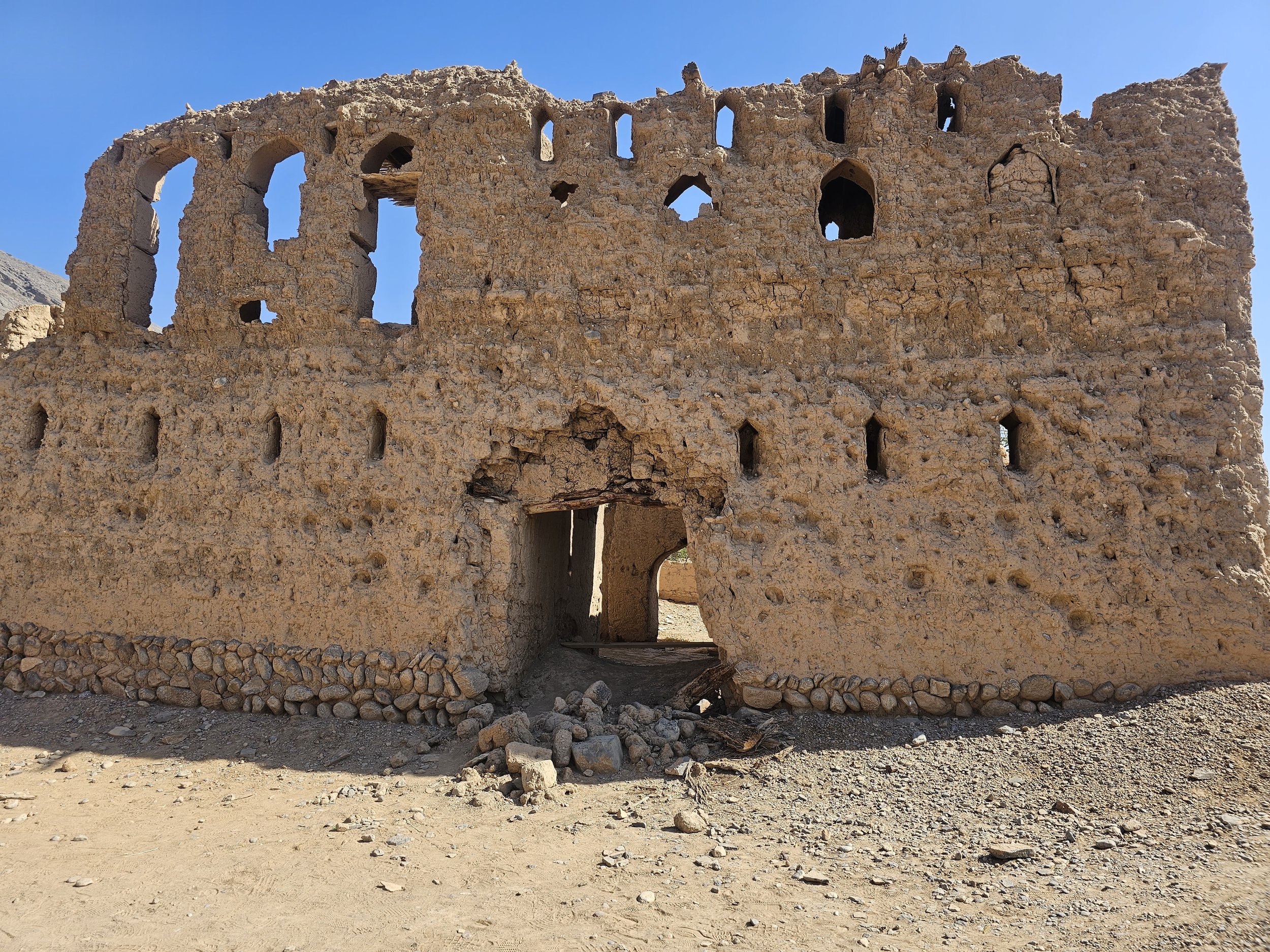
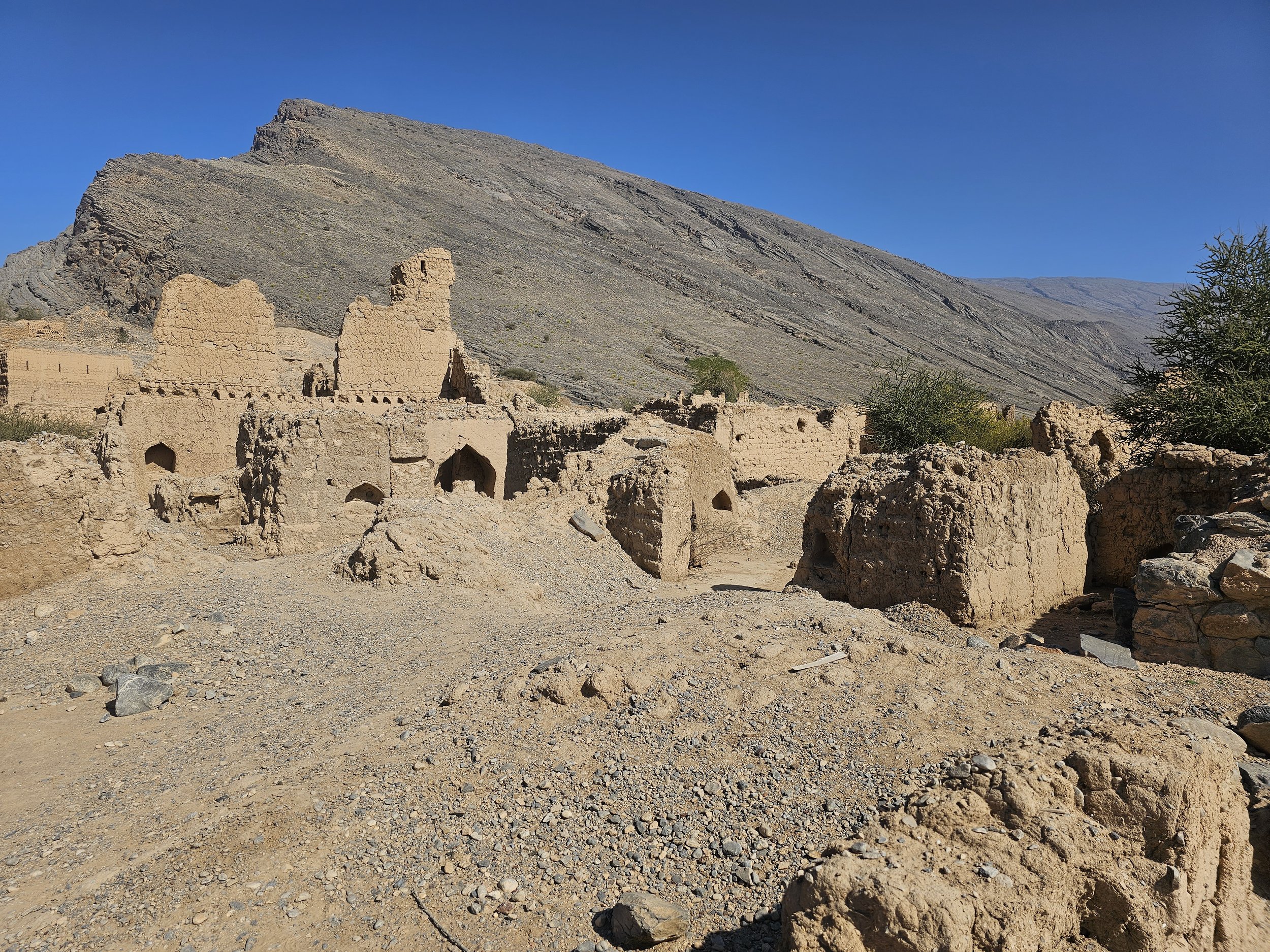
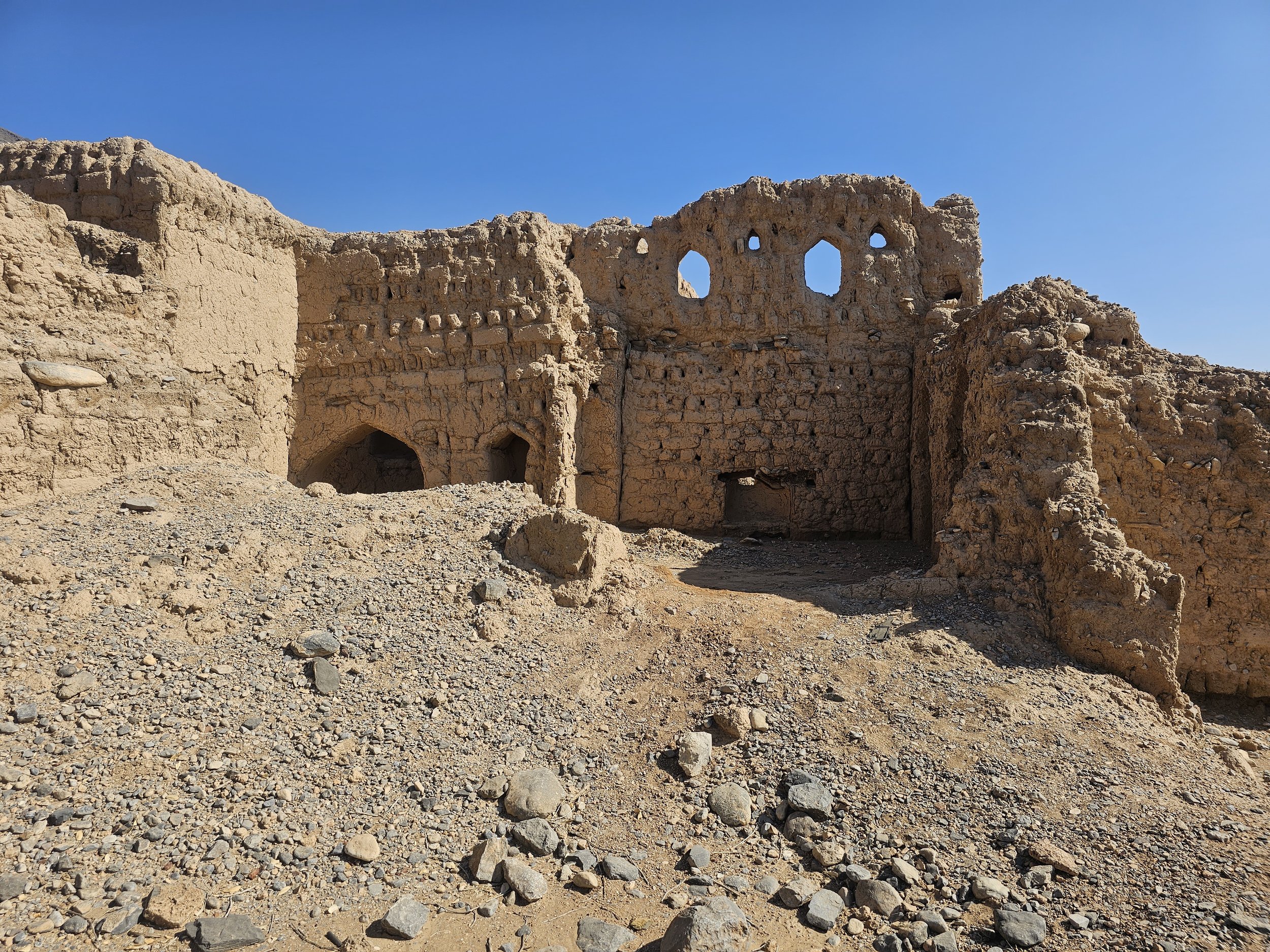
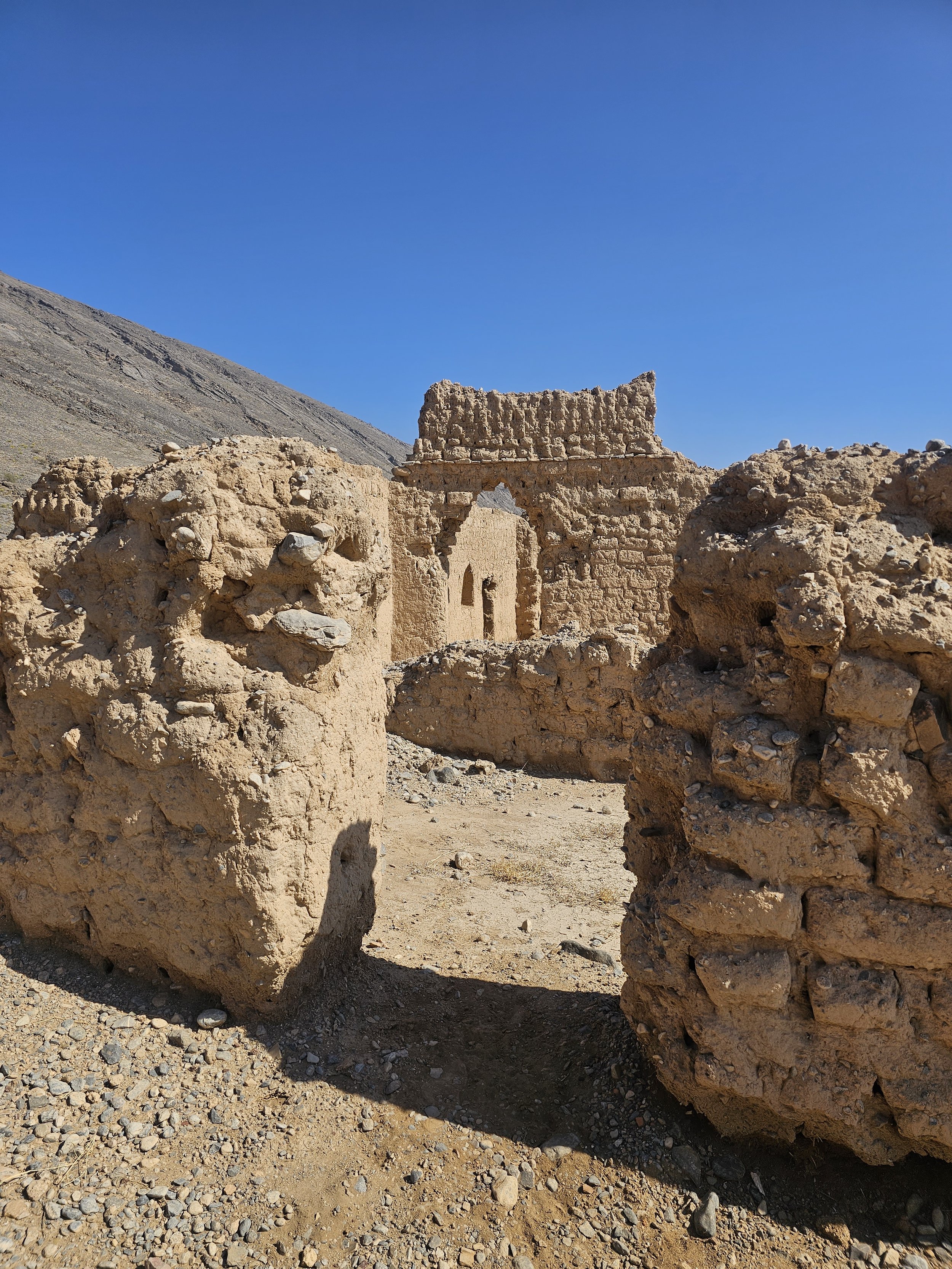
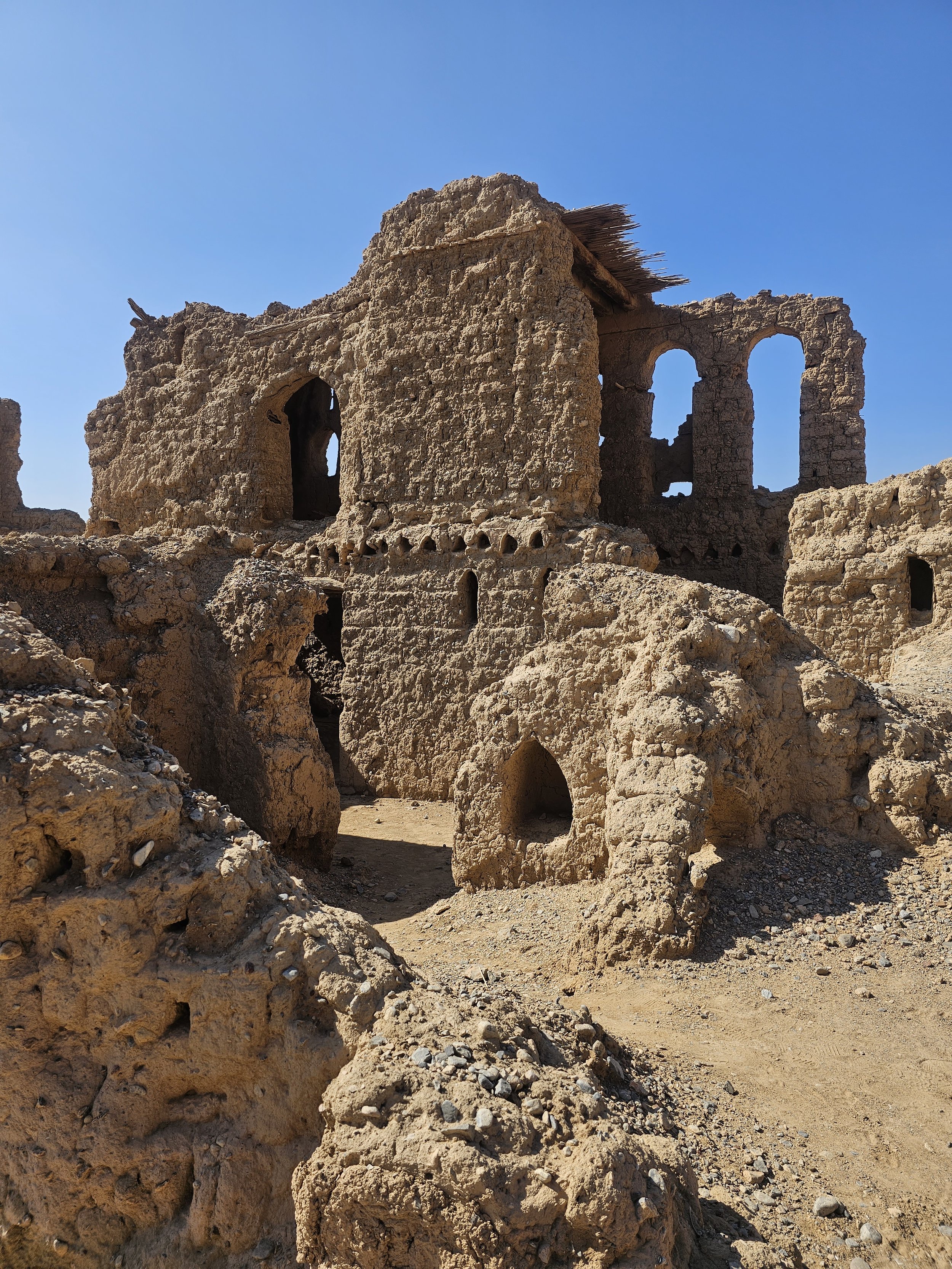
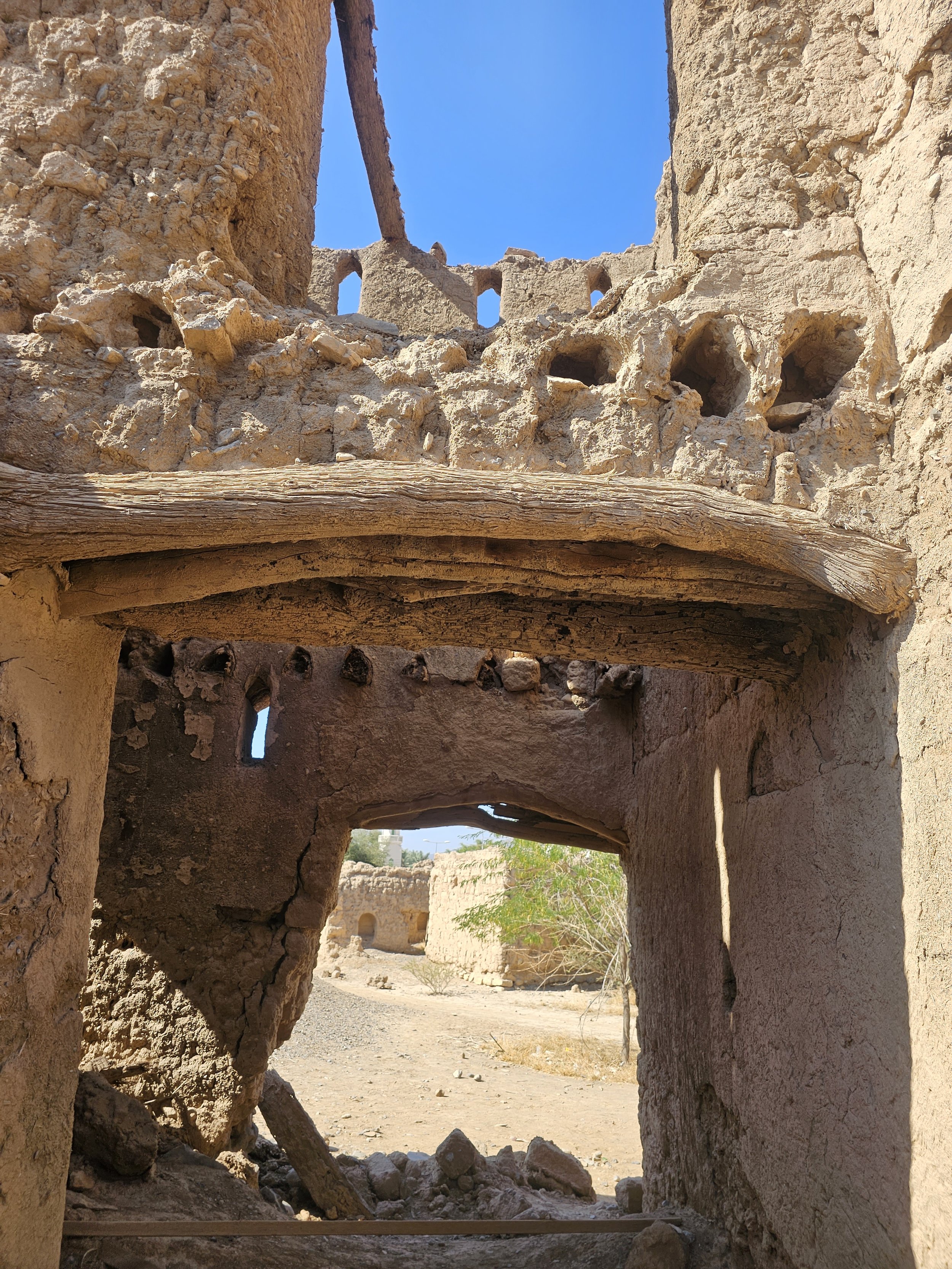
I spent a good half hour wandering amongst the ruins, enjoying the utter solitude, before continuing to the wadi, where I sat in the dry riverbed, under the shade of a small tree, and lunched on grilled olives, hummus, baba ghanouj, and pickled vegetables.
These grilled olives with sundried tomatoes and rosemary were my favorite snack throughout my Omani adventure—and I still think about them every day
Riwaygh As-Safil (Day Three)
The abandoned village of Riwaygh As-Safil, with lush farmland below
This was another spot that took me quite by surprise—and quite by accident—late in the afternoon on day three of my journey.
The night before, I had camped alone in a remote corner of Wadi Damm, enjoying a kind of solitude that I had never experienced before. Miles down a twisting, weaving dirt road, without phone reception, without another human or creature in sight, I had discovered a new depth of solo travel.
My campsite in Wadi Damm, surrounded by nothing and no one
However, the night proved to be quite cold, and after shivering miserably in my tent for several hours, I grabbed my sleeping bag and hiked back up to my car, where I stretched out across the backseat and snoozed sporadically until just before sunrise.
That day, I visited the rest of Wadi Damm (where I discovered a campsite populated by a handful of visitors, none of whom had the pleasure of enjoying the solitude I’d experienced by going off the beaten path), drove out to the remote village of Maqabil to check out the Bronze Age beehive tombs of Bat, and then headed back in the direction of Jebel Shams, traversing bumpy dirt roads and a particularly frightening dirt-road mountain pass on the way.
The Bronze Age tombs at Bat were among the most remote—and most ancient—sites I visited in Oman. (And it was here that my vehicle nearly got stuck in thick gravel, which would’ve been an absolute nightmare. Thankfully, I’m resourceful in tricky situations. Note to self: next time, make sure the vehicle you rent is a four-wheel drive.)
As I was driving up to Jebel Shams, planning out the logistics involved in my next night of camping and dreading the fact that it would be considerably colder than the night before, I suddenly had an epiphany: I don’t have to do this. I don’t need to suffer in the bitter cold, just because I have some stubborn inclination to do so. I’m allowed to do whatever I want.
I pulled over to the side of the road, opened my Hotels.com app, and found a gorgeous resort above the town of Al Hamra, about an hour’s drive from my current location. I whipped the car around and headed back down the mountain.
It was during this drive to The View that I came across the ruins of Riwaygh As-Safil. This abandoned town sits high on a hill above the agricultural valley below. The site—and its juxtaposition above the flourishing fields and orchards below—is breathtaking to behold.
The village was constructed using a mix of mudbrick and stone, and villagers relied on the oasis and farmland in the valley below for sustenance
I would pass it again the next day, as I made my way back up to Jebel Shams—a journey that accidentally took me on one hell of a hair-raising detour. (A story for another post!)
Misfat Al Abriyeen (Day Five)
Resting atop the charming mountain village of Misfat Al Abriyeen (with the resplendent oasis down in the valley below)
On the morning of day five—the final day of the inland leg of my trip—I awoke at Jebel Shams and was on the road before 8 am. My agenda for the day was full of stops, the first of which was the traditional Omani mountain village of Misfat Al Abriyeen.
For more than 2,000 years, Misfat Al Abriyeen has been a self-sustaining community—thanks to its lush, verdant oasis and its ancient falaj irrigation system. Today, UN Tourism has designated Misfat Al Abriyeen as one of the world’s Best Tourism Villages, and it’s easy to see why. With a focus on sustainability, careful heritage preservation, and authenticity, this mountain village exudes charm from every corner.
I arrived at around 9 am, and quickly sought out a café for a little morning pick-me-up. I found it at Halwa Coffee, where I enjoyed a dallah of Omani coffee and some halwa (Oman’s beloved national dessert) made from figs. This charming little spot is accessed by traversing through a small rock crevasse, and then climbing several flights of stairs. The coffee was fantastic, and the view from the terrace was breathtaking.
Enjoying my Omani coffee and halwa (the country’s beloved national dessert, and an excellent source of energy)
After sufficient caffeination, I began wandering toward the upper outskirts of the town, where I soon stumbled upon a qanat, or irrigation channel, perched above the deep valley below. I then wandered back through the old stone and mudbrick town and down into the oasis, where I carefully meandered along the ancient manmade waterways. An older local man passed by, and I began chatting with him about the oasis and its irrigation system. He told me how he and his family lived across the valley, in the newer part of town, but he still maintained his old family home here in the old town. By utter luck, I met him again a while later outside of this old family home, and he invited me in to look at the construction of the house, and some of the antiques he kept stored inside.
Exploring the oasis and its ancient irrigation system (which dates back more than 2,000 years)
Before leaving town, I stopped by a shop to sample and purchase some locally produced honey—and then I was back on the road.
Birkat Al Mouz (Day Five)
Birkat Al Mouz is one of Oman’s greatest treasures (and in a country that is absolutely overflowing with breathtaking nature, history, and culture, that’s saying something)
It was late in the afternoon, and after finishing a tour of Jabreen Castle, my hours of remaining daylight were quickly diminishing. I had a choice to make: would I visit the Oman Across the Ages Museum (which I’d been told by a colleague was a remarkable stop), or would I pass by yet another mudbrick village on my way back to Muscat?
I chose Birkat Al Mouz—and I can confidently say that I made the right decision. This ancient village was, without a doubt, the highlight of an already extraordinary day, and one of the most memorable excursions of the entire trip.
I strolled aimlessly along this waterway (yet another incredible example of Oman’s ancient irrigation systems) until I stumbled upon a treasure trove of mudbrick ruins
I parked my vehicle at Bayt Ar Ridaydah Castle, a charming 17th-century fort, but didn’t waste any time there: I made my way over to Falaj Al Khatmain, and soon found myself strolling in solitude along the canal, balancing on the ledge as I passed above the oasis.
After about 10 or 15 minutes of walking, I started to come across the remnants of a few old mudbrick homes. Suddenly, as I rounded a corner and navigated past a local mosque, the ancient city came into full view: perched up on a hill above the oasis (and the more modern city that has expanded out into the valley), the mudbrick ruins of Birkat Al Mouz are extraordinary. I wandered through the labyrinth of streets and alleyways and half-collapsed houses, heading up and up until I reached the top of the town. I looked out over the ruins below me, the oasis beyond, and the mountains off in the distance, as the sun sunk down into the horizon, and I felt, yet again, that swell of wonder and delight and excitement and deep, profound inner peace that serves to remind you that life is beautiful and finite and worth embracing to the fullest at every opportunity.
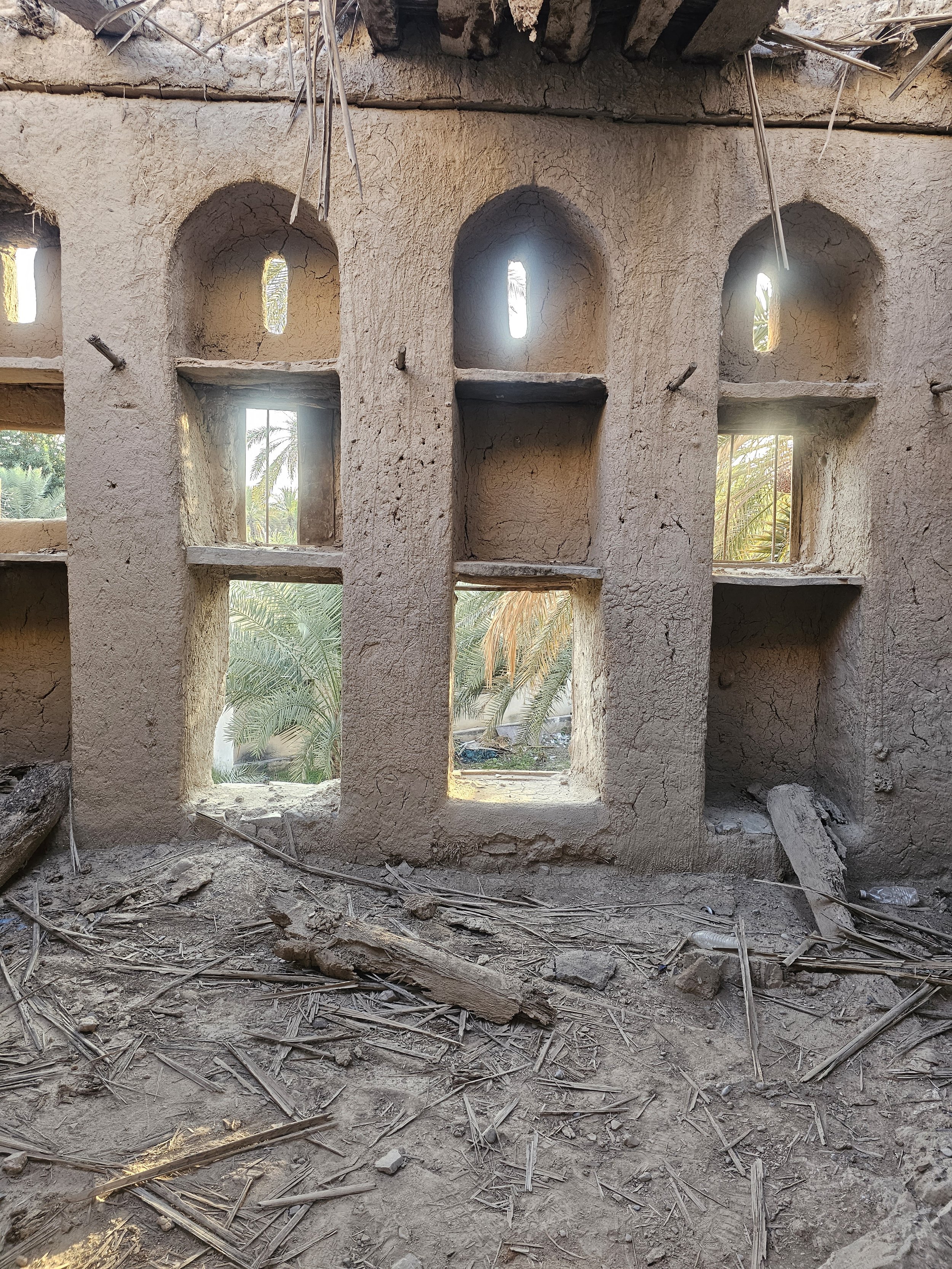
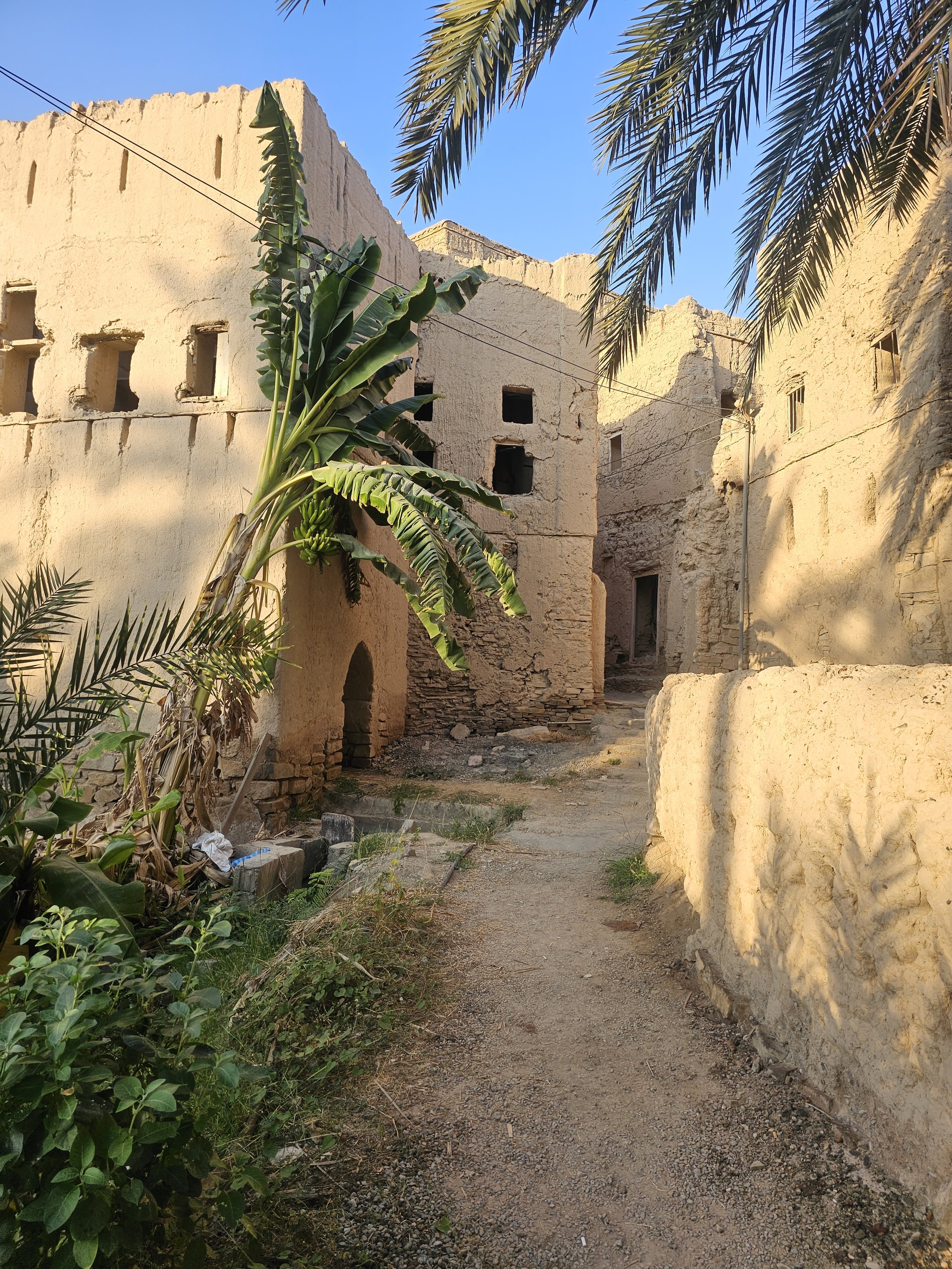
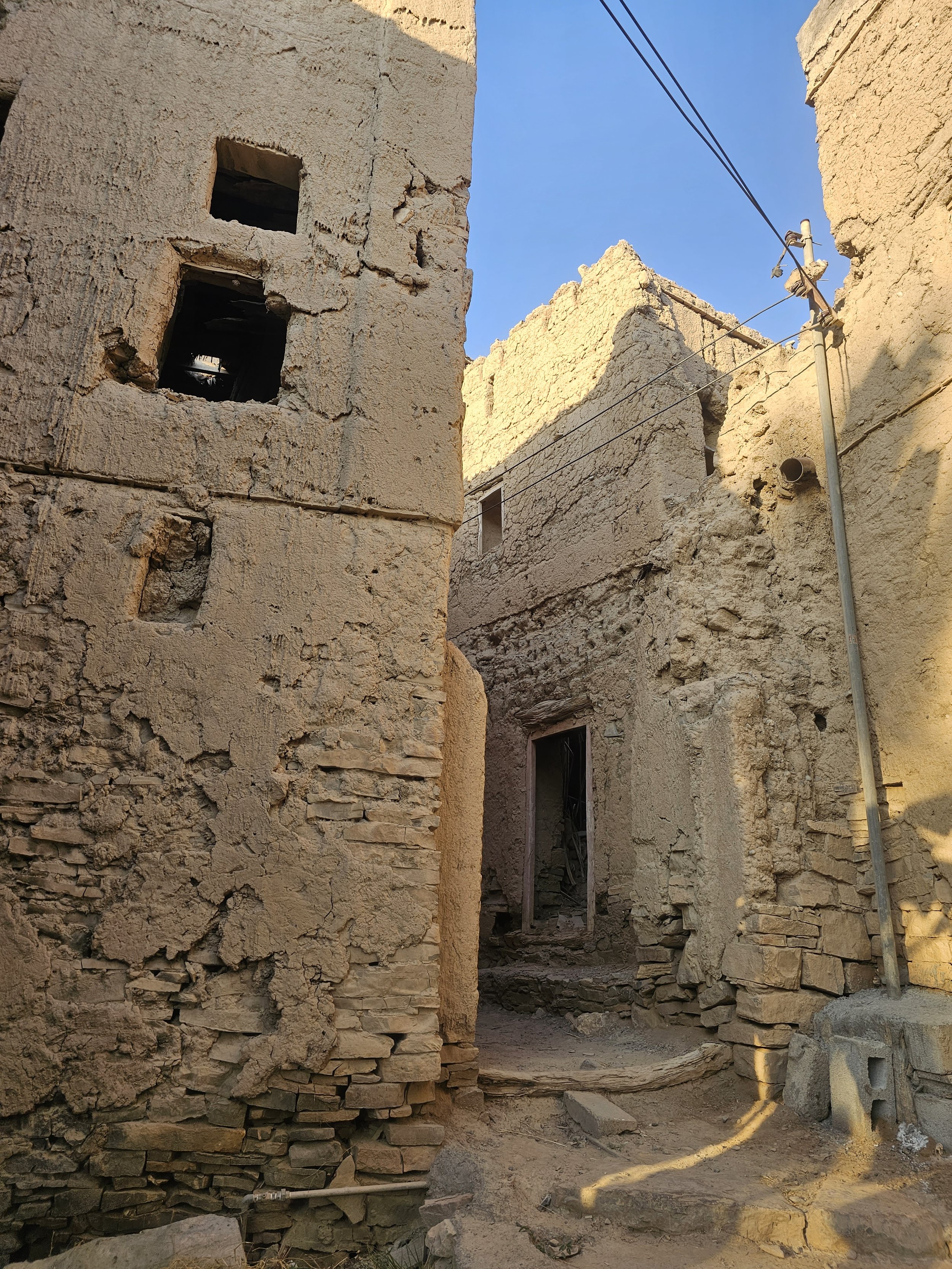
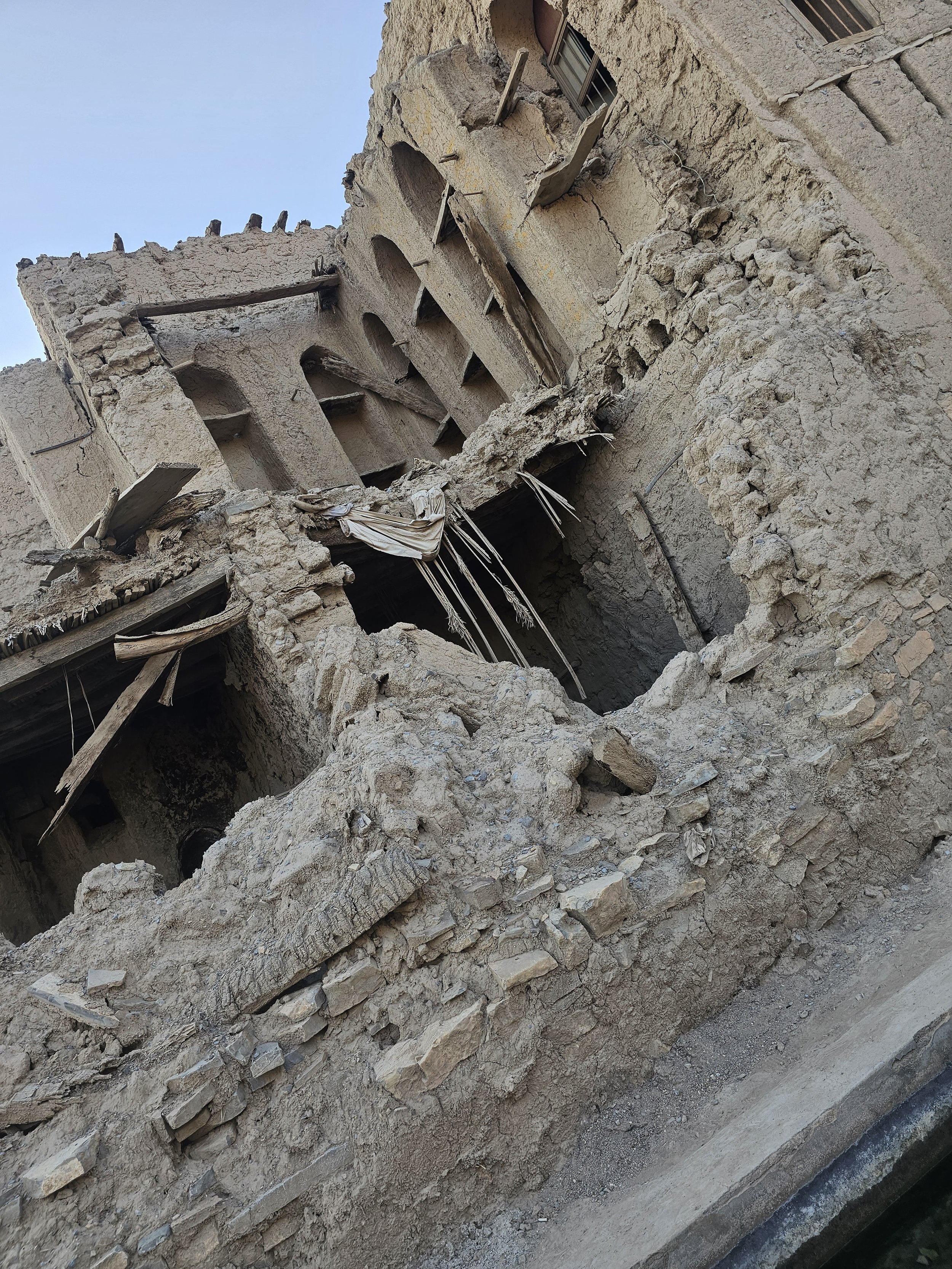
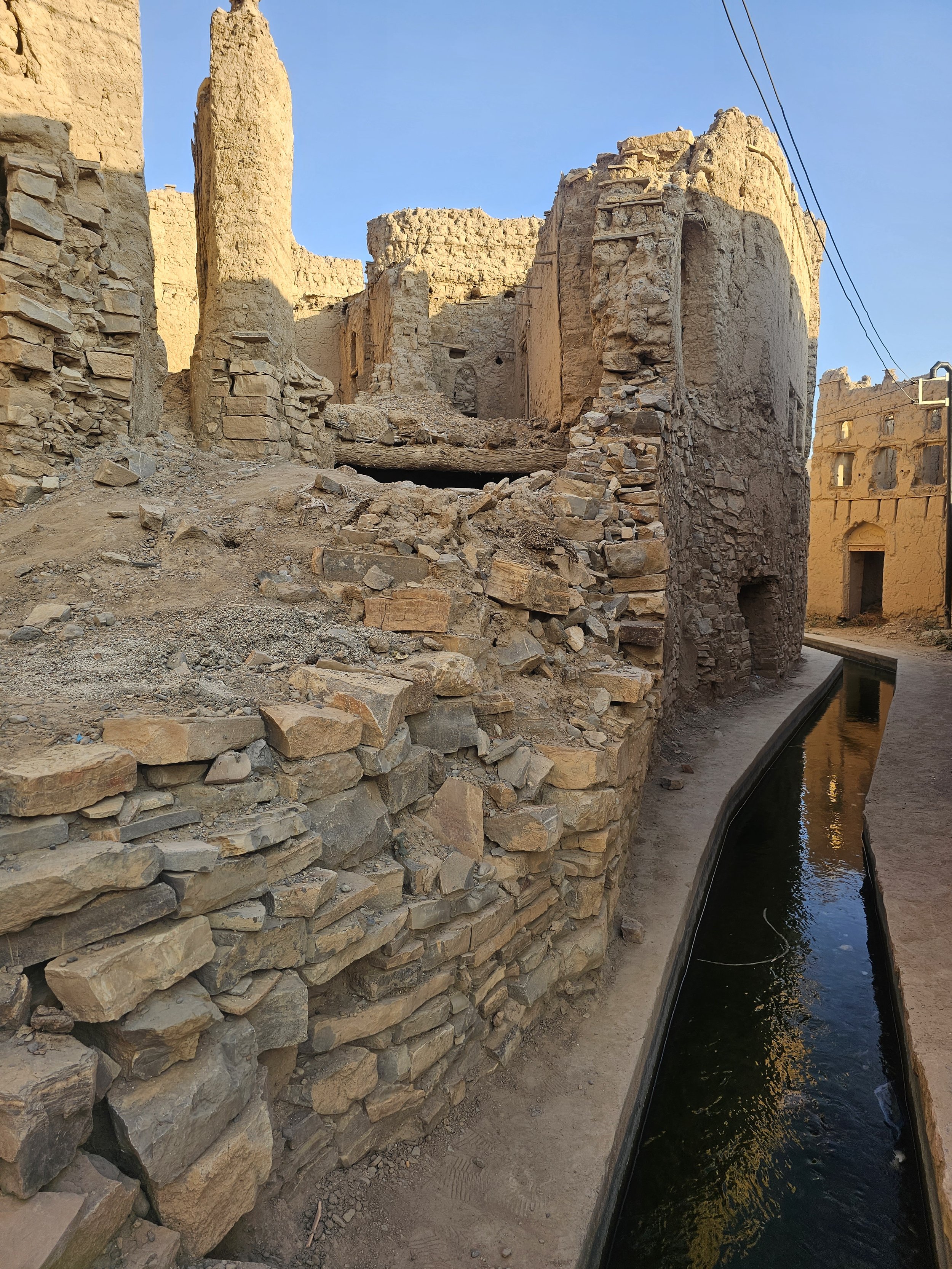
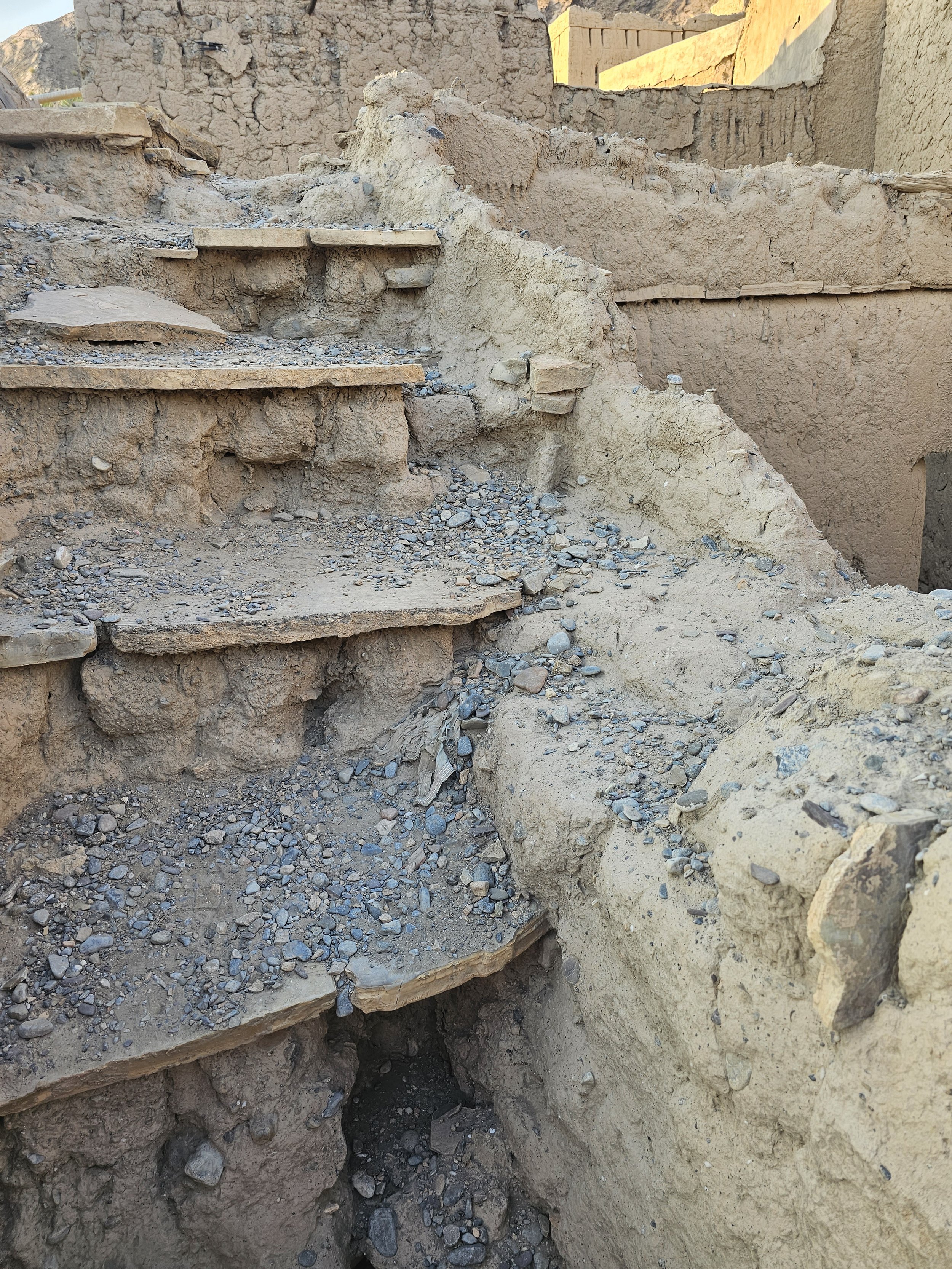
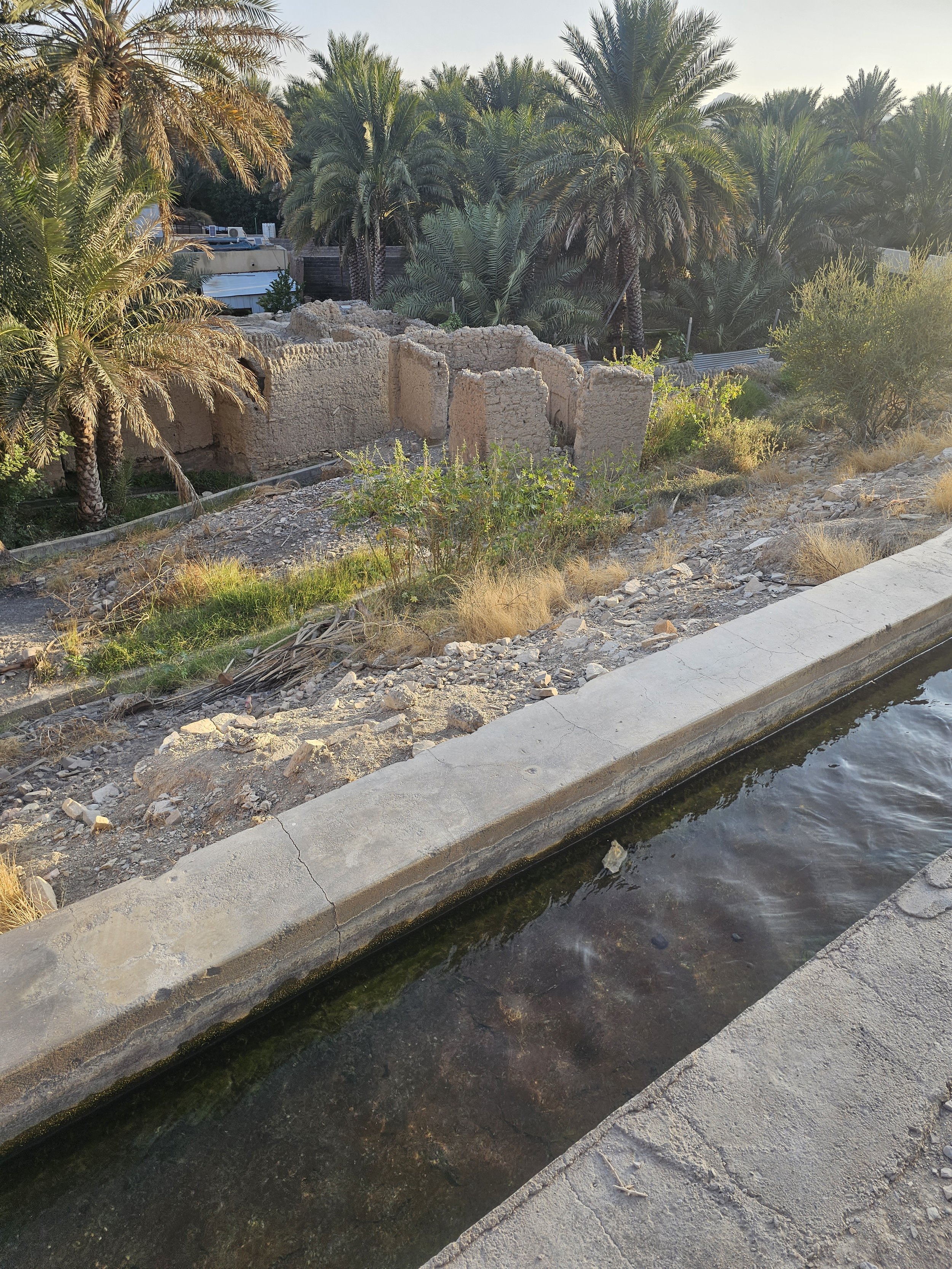
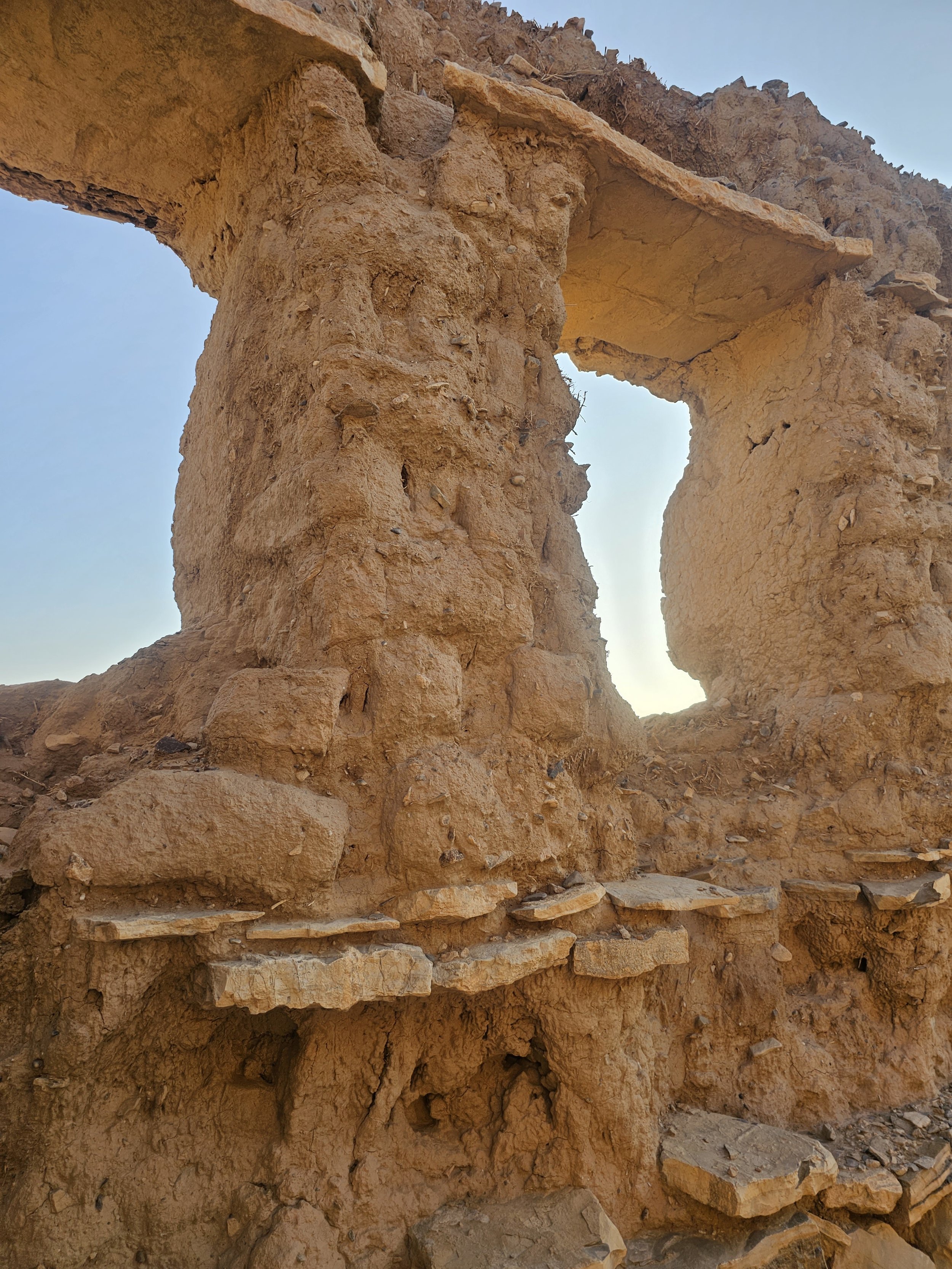
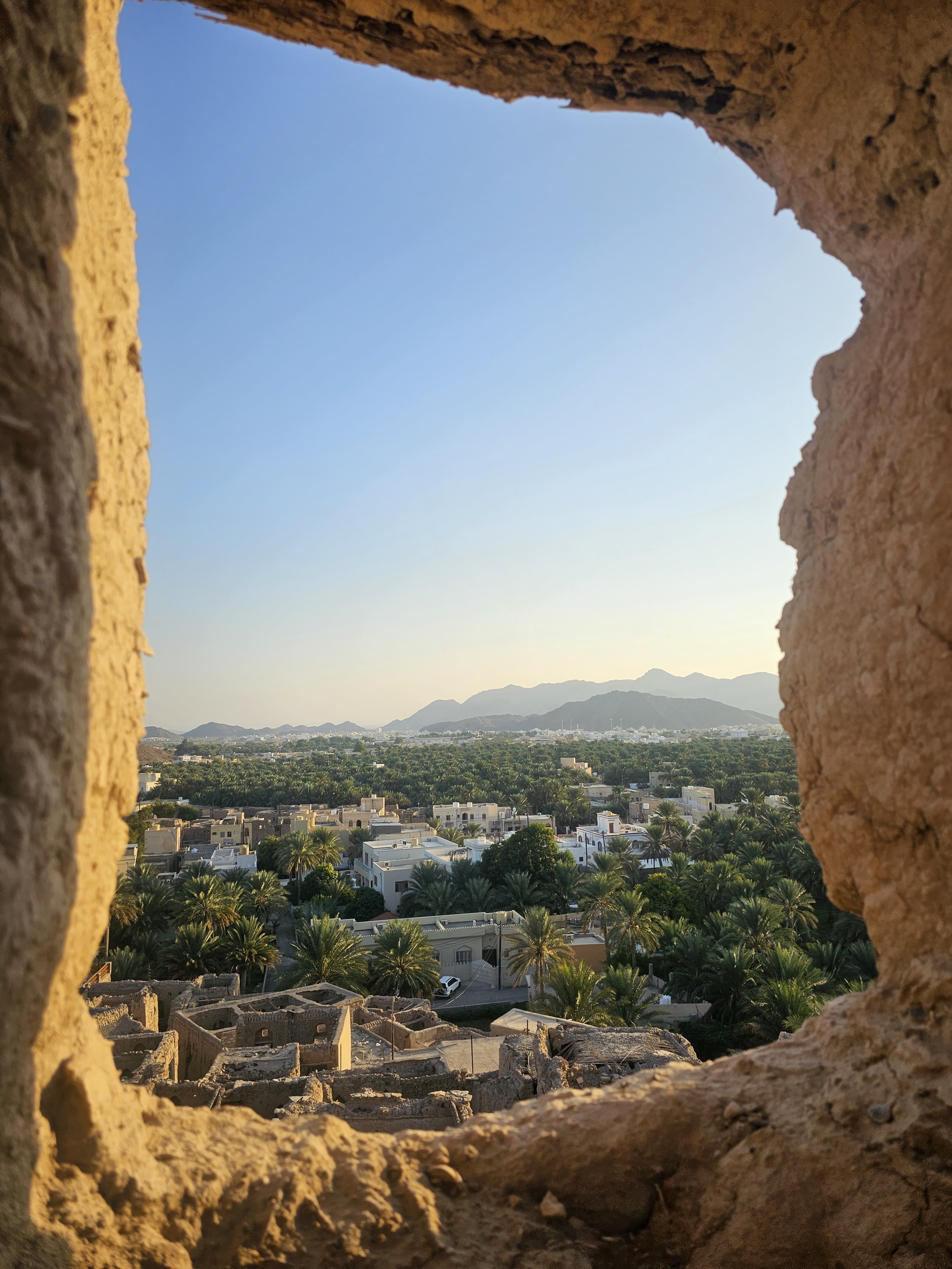
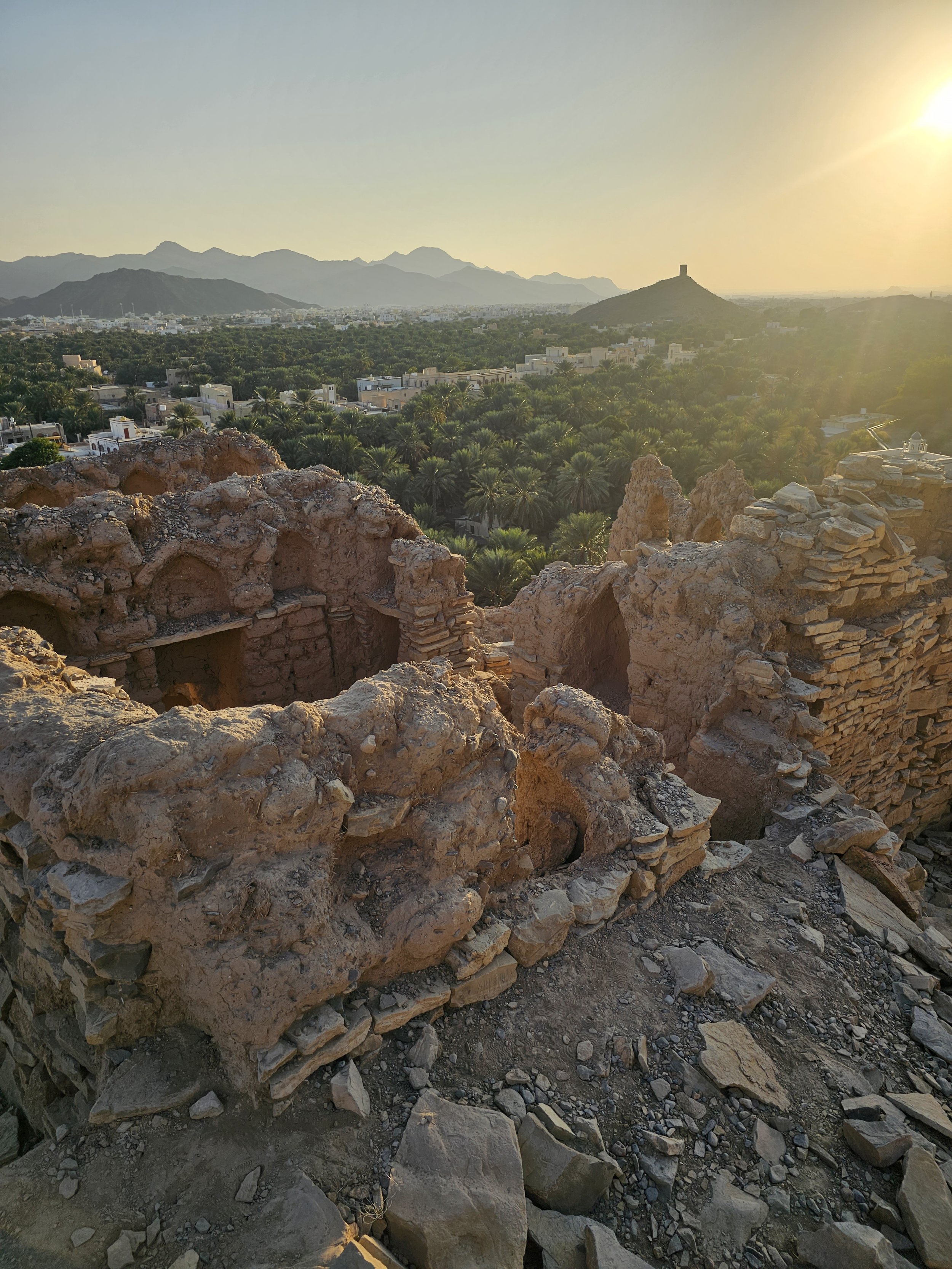
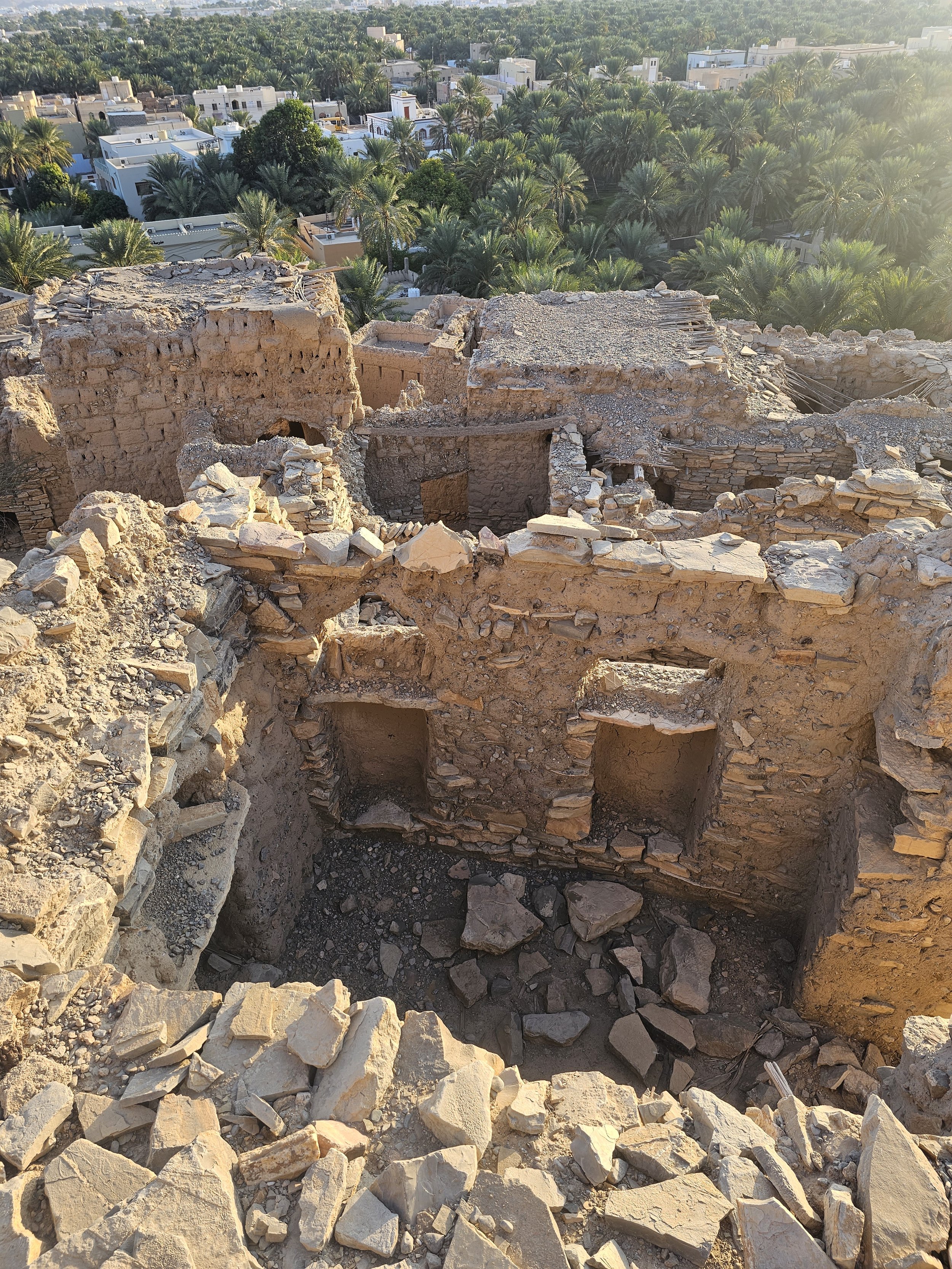
In the week that followed, my journey through Oman would take me on an incredible array of new adventures along the country’s magnificent coastline. My evening at Birkat Al Mouz was the perfect segue between the two legs of my trip—a last moment of solitude before I would dive deep into what it means to no longer be doing all of this alone.
And by ‘all of this,’ I guess I’m not just referring to travel.
Like I said: watch this space.

















